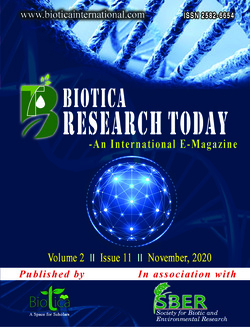
Production of Daphnia for Freshwater Nursery Rearing of Cultivable Fishes
Rameshwar V. Bhosle1*
Dept. of Aquaculture, Fisheries College and Research Institute, Tuticorin, Tamil Nadu (628 008), India
Stephen Sampath Kumar J.
Directorate of Sustainable Aquaculture, Tamil Nadu Dr. J. Jayalalithaa Fisheries University, Thanjavur, Tamil Nadu (614 904), India
Somu Sunder Lingam R.
Krishnagiri-Barur Centre for Sustainable Aquaculture, Tamil Nadu Dr. J. Jayalalithaa Fisheries University, Barur, Krishnagiri, Tamil Nadu (635 201), India
DOI: NIL
Keywords: Cladocera, Daphnia, Live Feed, Mass culture
Abstract
Aquaculture producing the cheapest protein and good source of nutritional food for the human nutrition. However, intensification of aquaculture systems requires supply of high quality seed which indirectly influenced by the supply of live feed. Mass production and supplementation of live feed play a vital role in larval nutrition of aquaculture hatchery practices. The newly hatched larvae are highly relying on live feed which provides nutrients for growth and physiological activities. The Cladoceran like Moina and Daphnia spp. etc. have good source of nutritional food for many cultivable fishes. Daphnia is an inevitable live feed used in freshwater aquaculture. The impotence of commercial feed at early larval culture makes daphnia as potent live feed in many freshwater fish hatcheries. Therefore, the insemination of daphnia culture and their nutritional make up could help the hatchery people to perform well in the near future.
Downloads
not found
Reference
Delbare, D. and Dert, P., 1996. Cladocerans, nematodes and trochophora larvae. Manual on the Production and Use of Live Food for Aquaculture, pp. 283-295.
Brett, M. T., Müller-Navarra, D. C., Ballantyne, A. P., Ravet, J. L.,Goldman, C. R., 2006. Daphnia fatty acid composition reflects that of their diet. Limnology and Oceanography, 51: 2428-2437.
Cheban, L. M., Grynko, O. E., Marchenko, M. M., 2017. Nutritional value of Daphnia magna (Straus, 1820) under conditions of co-cultivation with fodder microalgae, 9: 166-170.
